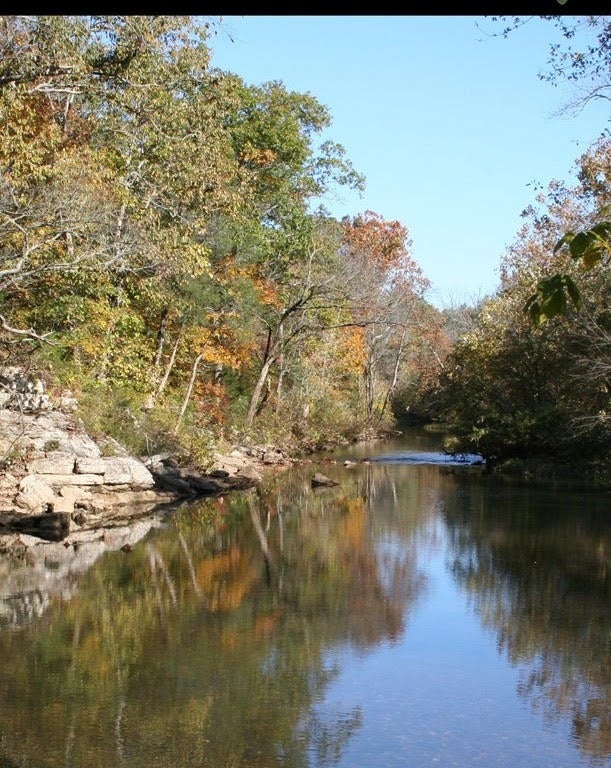Expedition on the Borderland 1766
Published 3:10 pm Thursday, August 3, 2023

- The Stone River, named for Uriah Stone. National Park Service photo
|
Getting your Trinity Audio player ready...
|
BY JADON GIBSON
Contributing columnist
James Smith learned in 1766 that the King’s agent of Indian affairs, Sir William Johnson, had purchased all the land west of the Appalachian Mountains lying between the Ohio and Cherokee rivers.
After talking with several Indians and learning of the vastness of the rich land he decided to journey westward and explore the territory.
“About the last of June 1766, we set out for the Holston River,” Smith wrote. “We traveled westward from there with William Baker, Joshua Horton, Uriah Stone and another James Smith.
“There were only five of us and a slave named Jamie who was about eighteen years of age. He was with Joshua Horton. We explored the area south of the Kentucky River and found no signs of white men. We then explored the Cumberland and Tennessee Rivers from Stone’s River to the Ohio River.”
Stone’s River is a branch tributary of the Cumberland River adjoining it above Nashville. It was named after Uriah Stone, one of the men taking part in the exploration.
After an extensive exploration of the area, they arrived at the mouth of the Tennessee River. All the members of the group decided to proceed further westward except for Smith whose diary is the basis for this information. He allowed them to take his horse, bidding them farewell before starting his own journey home. My readers and I decided to return to our homes in Carolina.
“Mr. Horton loaned me his slave and I set off through the wilderness for Carolina,” Smith penned. “About eight days after I left my company on my journey eastward, I got a cane stab in my foot, which caused my leg to swell and I suffered very much pain.”
Smith found himself in a desperate situation.
“I am so far from any of the human species except for Jamie and I know not when I may encounter the savages,” Smith penned. “I thought something must be done. I had a knife, a moccasin awl and a pair of bullet molds with these I decided to pull the nasty piece of cane from my foot.
“I stuck the awl in the skin and with the knife I cut the flesh away from around the cane stuck in my foot. Then I commanded Jamie to catch it with the bullet molds and pull it out which he did. When I saw the cane it seemed a shocking thing to be in any person’s foot. I was certainly glad to have it out of my foot.”
Smith knew of various plants the Indians used as medicine. He had Jamie find a Linden tree and had him cut off a good portion of the bark and root.
“I had him beat it on a stone with a tomahawk and then boil it in a kettle. With the ooze I bathed my foot and leg. What remained was boiled into a jelly and I made a poultice with it to use as we continued our journey to Carolina,” Smith wrote. “I had no rags so I made use of the green moss that grows on logs and wrapped it round with elm bark. This made the swelling and inflammation hurt less and go away after a while.”
Heavy storms were experienced during this time and Jamie erected a shelter by using forks and poles that he covered with cane.
“We were almost out of provisions,” Smith wrote. “I had Jamie take my gun and I went along as well as I could. I concealed myself near the road and killed a buffalo. We jerked the lean and fried the tallow out of the fat meat, which we kept to stew with our jerky when we needed it.
“As my foot was still sore, I concluded that I would stay here until it was healed, lest my traveling too soon might inflame it again. I continued in this place until I could walk slowly without crutches.”
Smith wrote in summation, “During this time I neither saw bread, money, women or spirituous liquors and three months of this I saw none of the human species, except Jamie.” Smith and James arrived in Carolina after eleven months in the wilderness.
There was much cane in the area that became Kentucky. The first three letters of the plant “can” or “ken” gave us the first three letters of Kentucky. There’s a lot of cane there even now, but it grows mostly where it isn’t seen.”
Jadon Gibson is an Appalachian writer from Harrogate, Tennessee. Thanks to Lincoln Memorial University, Alice Lloyd College and the Museum of Appalachia for their assistance.





